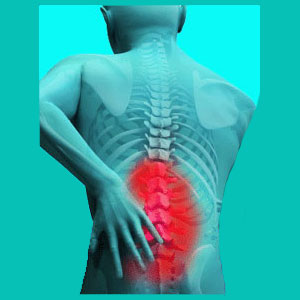
Herniated disc physicophobia describes a condition wherein the patient is deathly afraid of physical activity due to a spinal disc problem. These people are terrified of performing any strenuous activity and fear the consequences of exertions they absolutely must undertake. Physicophobia ranges in severity from minor to literally paralyzing, with some poor souls being completely disabled by their terror, rather than by any actual structural consequence of physical activity.
Physicophobia might have some structural basis for some patients and some activities. However, in our experience, the vast majority of cases are programmed behaviors and direct results of the nocebo effect often incurred by the good intentions of others constantly warning patients to be careful with their backs… Our clinical experience proves that not only can almost all physicophobias be overcome, but that they must be overcome in order for the patient to truly recover from their pain.
This fascinating treatise explores the concept of physicophobia is relation to a herniated disc diagnosis. We will define the problem, discuss its formative patterns and explain why overcoming the fear is of paramount importance in the recovery process.
Herniated Disc Physicophobia Defined
Physicophobia is a term that first came to our attention in the literary works of Dr. John E. Sarno. We knew the concept before, but never actually heard the word used in clinical medical practice. The name of the condition is perfect for what it truly is and what it entails: a complete fear of vigorous physical activity or exertion.
The degree of fear ranges from patient to patient and is highly case-specific. Some patients have minor fear about any type of strenuous activity, while others only hold feelings of nervousness about specific activities or events. Many patients are moderately fearful of vigorous physical activity or of specific types of physical activities. Meanwhile, the worst cases involve virtual paralysis with fear over the mere thought of participating in general or specific physical exertions.
So, what exactly qualifies as a physical exertion? This depends on the fears held by each patients and can also range across the full scope of possible physical activities including: lifting, bending, exercising, sports, working, running or doing just about anything that involves the use of the body, and specifically, the back.
Physicophobia Origins
Why do people develop physicophobias? Many have suffered exacerbated pain during or after performing physical activity. This aggravation of symptoms might have actually been caused by the activity or might simply have used the activity as a trigger mechanism. Patients rarely know the truth in this regard. However, an association is made between the activity and the occurrence of pain and this becomes a conditioned behavior. If the person participates, they expect pain and so pain appears.
Patients are usually subjected to considerable nocebo effect by the diagnosis of a herniated disc and all the prohibitions that their doctor might warn them about. The tyranny of the “dont’s” one might say… Don’t do this… Don’t do that… Don’t work when you have pain. Don’t ever go bowling. Don’t work in the yard. Don’t bend at the waist. Don’t lift. While these might be well-intentioned, they are rarely prudent suggestions, since most herniated discs are asymptomatic and there is little evidence that anything we do (within reason) exacerbates them any more than life in general might.
Reinforcement of these ideas, by well-meaning friends and family, make matters worse. People occasionally get up the courage to try and defeat their physicophobia, only to be warned to “Watch out for your back” or “Should you really be doing this with your bad back?” or “Stop it. You will hurt yourself”. Although protective, these reinforcements of the nocebo effect really sink in and permanently cement the physicophobia into the deep levels of the mind.
Herniated Disc Physicophobia and Recovery
In order to recover physically and psychoemotionally from any chronic pain condition, one must put aside the programmed behaviors of the pain syndrome. In essence, one must break out of the self-constructed prison of prohibitions that are really useless and incorrect from a scientific viewpoint. This idea has long been recognized in clinical medicine and has formed the basis for many rehabilitation programs that utilize this exact prescription, such as that run by Dr. Hubert Rosomoff. His herniated disc rehabilitation program utilizes very strenuous exercises and therapy routines, yet has been incredibly successful, even in patients who embrace the antiquated and incorrect view that herniated discs are inherently painful, problematic and physically-limiting.
It is crucial to break illogical associations between innocuous pain triggers and disc abnormalities. If you can, you will find yourself still having one or more herniated discs, but suddenly be free from their past physical restrictions without any structural treatment or surgery needed. If not, you will likely deteriorate in physical capacity year over year, become sedentary, become obese, develop diabetes, get sick, get sicker, die prematurely and never have to worry about the disc ever again. It is really that dramatic of a difference in life path and prognosis.
Trust me; I know how difficult it can be to overcome a powerful negative conditioning syndrome. But, take solace from the absolute fact that I have 12 severe herniated discs, some of which were first diagnosed over 30 years ago. I have been pushing my body to excel and perform physically my entire life. If I can do it, you can too. I have never met a patient who actually suffered additional injury of a herniated disc due to any commonsense physical activity. However, I have met (and helped produce) tens of thousands whose lives and pain scores have improved dramatically and exponentially by reintroducing physical activity back into their world, despite having a herniated disc.
Herniated Disc > Herniated Disc Advice > Herniated Disc Physicophobia





